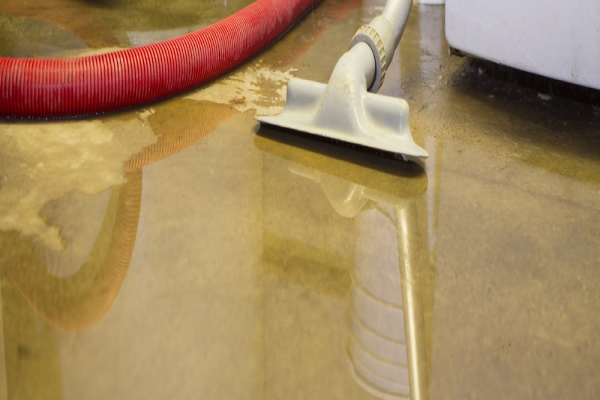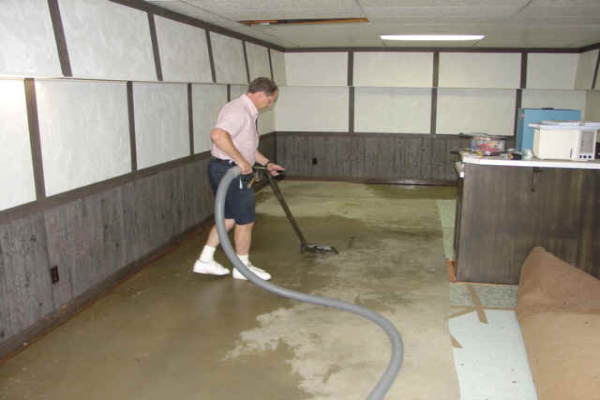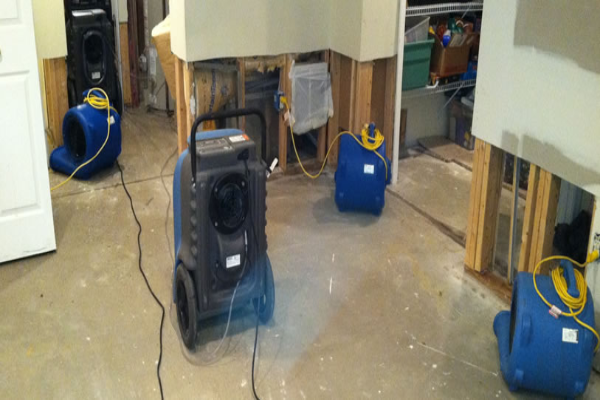Basement flooding is homeowner’s worst fear. The water can seep into your house right away, find its way to the foundation and cause many problems if you do not treat it. Basement flood cleanup is an important process that needs immediate action to reverse the damage and protect your home. In this article, we’ll describe what basement flood cleanup is, how it differs from water damage restoration, and services in North and West Vancouver that can help with these events.
Understanding Basement Flood Cleanup
You may ask what is basement flood cleanup? Basement flood cleanup involves clearing water from a flooded basement and restoring the area to its condition before the flood. Flooding may be caused by a variety of problems such as heavy rain, burst pipes, sewage back-up, or poor drainage systems around the home. No matter what the cause is, taking action immediately on floodwater is important in order to prevent extensive damage to your home and minimize the possibility of mold.
Read More:
One of the biggest hidden dangers after flooding is mold, which can start growing within 24 to 48 hours. If you want to keep your basement safe and your home healthy, it’s important to know how to properly prevent mold growth. Learn the key steps to protect your house in our full guide: How to Prevent Mold After a Basement Flood.
Common Causes of Basement Flooding
Before understanding the process of basement flood cleanup, let’s understand its common causes:
- Heavy Rain and Storms: Heavy storms or rain can persist for days, overpower drainage systems and lead to water buildup in your basement.
- Burst Pipes: Pipes freeze and burst during winter, and water will seep into your basement and flood it.
- Sewage Backups: Sewage systems that are clogged can back up into your basement, along with water damage and health hazards.
- Poor Drainage Systems: Dwellings with insufficient or clogged drainage systems are more susceptible to basement flooding, because water is trapped near the foundation.
Immediate Steps for Basement Flood Cleanup
When your basement is flooded, you should do quick action to reduce damage and prevent further difficulty. Take these steps for effective basement flood cleanup:
· Safety Precautions
Before going inside a flooded basement, be certain to cut the power to prevent electrocution risks. Having protective equipment such as rubber gloves and boots, will help you avoid coming into contact with contaminated water. It is also a good suggestion to remain outside until you are certain that it is safe to go in.
· Water Removal Techniques
When you’re sure about safety, water extraction is the first step in basement flood cleanup. Based on the severity of flooding, you can use several equipment and techniques:
- Sump pumps: Sump pumps are used to drain large amounts of water from the basement.
- Wet/dry vacuums: For small amounts of water, wet/dry vacuums can quickly vacuum up the water within a short period.
- Mops and towels: After removing most of the water, mopping and drying the floor helps to get rid of excess moisture.
· Drying and Dehumidification
When water is removed, the second step is drying the basement. You should dry the space so that mold does not form and you can also use fans and dehumidifiers. Dehumidifiers pull wetness from the air, but fans push air, which dries more quickly. You should make sure everything dries completely to prevent mold.
· Cleaning and Sanitization
Sanitizing and cleaning are necessary to prevent contamination. Floodwaters carry dirt, bacteria, and other harmful chemicals that can negatively affect your health. So you should disinfect all the surfaces, including floors, walls, and any recovered furniture. Basement flood cleanup involves the removal of all debris, furniture cleaning, floor, and wall cleaning, and ensuring everything is sanitized prior to use.
· Professional Assistance
While sometimes it is possible to do basement flood cleanup by owners, major damage or flooding is outside their control and needs professional help. By hiring experts, the work gets done properly and in the right method, particularly with mold, large water damage, or in the case of structural repairs. The experts have equipment that would handle large flood incidents and make the basement secure and clean.
Water Damage Restoration VS Basement Flood Cleanup
After the flood has been removed, water damage restoration follows. Restoration involves fixing any structural damage to the property that is caused by the water, such as rotting wood, drywall damage, and damaged foundations. Restoration can also involve fixing plumbing issues, replacing insulation, and even addressing mold and mildew problems. The goal is to bring the damaged areas back to their original condition or better, to prevent future damage.
The primary difference between basement flood cleanup and water damage restoration is that while basement flood cleanup is all about short-term measures like draining water and drying the area, water damage restoration is all about long-term repairs and structural interventions to make your home secure and fully restored.
Water Damage Restoration Services in North and West Vancouver
In North and West Vancouver, there are several companies such as Revive Restoration, offer professional water damage restoration services, especially after basement flooding. These services offer homeowners help to restore their homes effectively. Some of their services include:
1. Emergency Water Extraction
In areas like North and West Vancouver, water extraction services and basement flood cleanup are available to address emergency situations. Restoration teams with training have access to high-capacity vacuums and pumps to extract water quickly to minimize the amount of damage and the time it takes to restore.
2. Structural Drying
After water removal, structural drying is important. Industrial dehumidifiers and air movers are used by restoration technicians to dry the space. You should dry correctly to prevent mold and structural issues.
3. Mold Remediation
Mold is a common issue after water damage. North and West Vancouver mold remediation professionals will be in a position to identify and eliminate mold development in affected areas. They use professional machinery to decontaminate and destroy mold and to make it safe for you.
4. Reconstruction and Repair
For basement flood cleanup, when the water evaporates and the surface is dry, the reconstruction and repair phase follows. The reconstruction work is either fixing or replacing the damaged floors, walls, ceilings, and even structural elements like beams and foundations. This helps in refilling the basement to its original state and makes it safe for occupation.
Conclusion
We answered the question of what is basement flood cleanup. Basement flood cleanup is a critical process of ensuring that your house does not experience water damage. While it focuses on removing water and drying out the affected area, water damage restoration goes a step further to restore any permanent flood damage. Homeowners in West and North Vancouver can use professional services that can help them effectively deal with such problems, including emergency water extraction, structural drying, mold remediation, and reconstruction and repair.
Revive Restoration: Your Trusted Flood Cleanup Partner
Revive Restoration is a reliable expert in basement flood cleanup and water damage restoration in North Vancouver and West Vancouver. Our skilled team offers efficient services like water extraction, drying, and mold remediation, to make your home restored quickly and safely. For immediate help with flood cleanup, contact Revive Restoration today. Get the professional help you need to restore your property.





